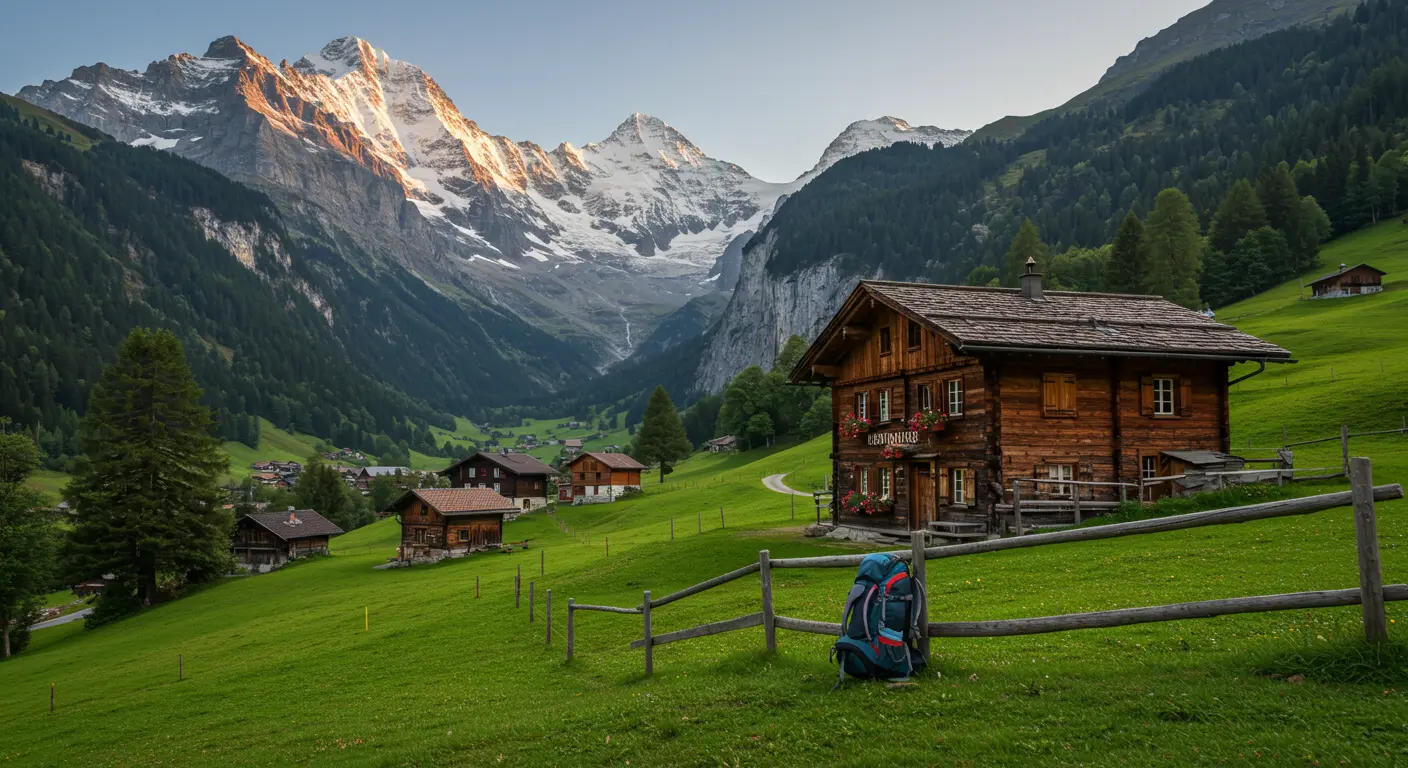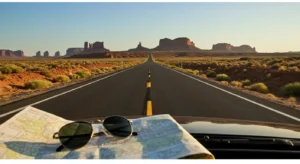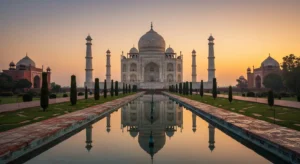Table of Contents
Your First Switzerland Vacation: A Beginner’s Guide to Alpine Magic
You’ve seen the photos—a perfect wooden chalet perched above a turquoise lake, snow-dusted peaks piercing a clear blue sky, a charming train chugging across a dramatic viaduct. It looks almost too perfect to be real, doesn’t it? I remember thinking the same thing before my first trip.
Here’s the truth: Switzerland isn’t just a postcard. It’s a feeling. It’s the crisp mountain air filling your lungs, the sound of cowbells echoing across a green valley, and the sheer, awe-inspiring silence at the top of the world. But planning a trip to this Alpine wonderland can feel daunting, especially for a first-timer. How do you even begin?
Don’t worry, I’ve been there. After multiple trips and a borderline obsession with Swiss efficiency and beauty, I’ve distilled everything you need to know. This guide is your friendly first step, designed to transform that dream of a Switzerland vacation into a clear, confident, and utterly unforgettable plan.
First Things First: Laying the Groundwork
Before we dive into castles and cable cars, let’s tackle the practical bits. A little planning here goes a long way in ensuring a smooth trip.
When to Go: Picking Your Swiss Season
Switzerland wears every season beautifully, but your experience will vary dramatically.
- Summer (June-August): This is peak season for a reason. The weather is warm, the hiking trails are all open, and the days are long. It’s perfect for lake swimming, alpine hiking, and exploring cities. The catch? It’s also the most crowded and expensive time.
- Shoulder Seasons (April-May & Sept-Oct): My personal favorite. You get the best of both worlds—milder weather, fewer crowds, and lower prices. In spring, the flowers are blooming; in fall, the landscapes are painted with golden larch trees. Some high-altitude trails might be closed, but the trade-off is often worth it.
- Winter (December-March): Obviously, this is for the snow lovers. It’s a magical time for skiing, snowboarding, and Christmas markets. The lowlands can be grey and foggy, but the mountain regions are sunny and spectacular.
Getting Around: The Swiss Travel System is Your Best Friend
The rumors are true: Swiss public transport is a miracle of precision. Renting a car offers freedom, but for most visitors, the train, bus, and boat network is the way to go. It’s efficient, scenic, and part of the experience.
This is where a Swiss Travel Pass can be a game-changer. It offers unlimited travel on most trains, buses, and boats, plus free entry to over 500 museums. For a first-timer hopping between cities and regions, the convenience and cost-saving can be significant. Do the math based on your itinerary, but it often pays for itself. You can check the latest options and prices on the official SBB (Swiss Federal Railways) website, the most authoritative source for travel in Switzerland.
Crafting Your Perfect Itinerary: The Classics & The Hidden Gems
You can’t see everything in one go, and you shouldn’t try. Switzerland is about savoring the moments. Here’s a sample 7-day loop that hits the highlights without feeling too rushed.
The Grand Tour: A 7-Day Taster
- Days 1-2: Zürich & Lucerne
Start in Zürich. It’s not just a banking hub; the Old Town (Altstadt) with its cobbled streets and waterfront is enchanting. Then, take a short train ride to Lucerne. This is the picture-postcard Switzerland you’ve dreamed of. Walk the iconic Chapel Bridge, admire the Water Tower, and feel the history in the Musegg Wall. It’s the perfect, gentle introduction. - Days 3-4: The Heart of the Alps (Jungfrau Region)
From Lucerne, a breathtaking train ride brings you to Interlaken, the gateway to the Jungfrau Region. Don’t linger in Interlaken—head up into the mountains! Base yourself in idyllic villages like Grindelwald or Wengen. Here, you’re surrounded by legendary peaks like the Eiger, Mönch, and Jungfrau. A must-do? The train journey to the Jungfraujoch – Top of Europe. It’s pricey, but standing on that glacier at 3,454 meters is a memory that simply doesn’t fade. - Days 5-6: The Matterhorn’s Kingdom (Zermatt)
Next, a longer train journey (itself incredibly scenic) takes you to Zermatt. This car-free village lives in the shadow of the most famous mountain in the world—the Matterhorn. It’s even more striking in person. Spend a day taking the Gornergrat Railway for staggering panoramic views of the mountain and its glacial companions. The vibe here is a wonderful mix of rustic charm and mountaineering history. - Day 7: The Swiss Riviera (Montreux) & Departure
Wind down your trip by heading to Montreux on the shores of Lake Geneva. The climate is milder, the palms are swaying, and the mood is relaxed. Stroll the beautiful lakeside promenade and visit the stunning Château de Chillon. From here, Geneva Airport is an easy train ride away for your flight home.
Beyond the Brochure: Making Your Trip Truly Yours
The classic route is fantastic, but if you have more time or want a different flavor, consider these deeper cuts.
- For the Fairytale Lover: Swap Zermatt for Bern, the stunning capital with its medieval arcades and bear park. Or, head to Gruyères for a day of cheese, castles, and a touch of the surreal at the H.R. Giger Museum.
- For the Ultimate Scenic Journey: Dedicate a full day to the Glacier Express. It’s not an express train at all, but a slow, 8-hour panoramic journey between Zermatt and St. Moritz. Dubbed the “slowest express train in the world,” it serves up some of the most jaw-dropping landscapes on the planet right from your seat.
Navigating the Costs: A Real-World Look
Let’s be honest, Switzerland is expensive. But it doesn’t have to break the bank with a few smart strategies.
- Accommodation: Book well in advance, especially for popular spots. Consider smaller family-run B&Bs (Gasthöfe) over large chain hotels for better value and local charm.
- Food: Eating out for every meal will drain your budget fast. Embrace the Swiss culture of picnic lunches. Visit a local Migros or Coop supermarket (their bread and roasted chicken are fantastic) and have a feast by a lake or on a mountain bench. It’s not just cheaper; it’s a core memory in the making.
- Activities: The Swiss Travel Pass offers discounts on many mountain railways and cable cars. Prioritize your “big ticket” items—maybe you choose Jungfraujoch but skip another—so you don’t have financial regrets.
Packing for Swiss Success
The golden rule? Layers. The weather can change in an instant.
- Regardless of Season: A waterproof and windproof jacket, comfortable walking shoes (sturdy hiking boots if you plan to hit the trails), a reusable water bottle, a power adapter, and a good camera.
- Summer: T-shirts, a fleece or sweater, and a sunhat.
- Spring/Fall: Add a warmer mid-layer like a light puffer jacket and a scarf.
- Winter: Thermal layers, a heavy coat, gloves, a warm hat, and waterproof boots are non-negotiable.
Frequently Asked Questions (FAQs)
Q: Is Switzerland good for non-hikers?
A: Absolutely! While hiking unlocks one dimension of its beauty, you can experience 90% of the stunning scenery from trains, cable cars, and lake boats. The cultural experiences in cities and towns are just as rich.
Q: Do I need to speak German or French?
A: Not at all. English is widely spoken in tourist areas, at transport hubs, and in hotels and restaurants. Learning a few basic pleasantries like “Danke” (Thank you in German) or “Merci” (Thank you in French) is always appreciated, but you’ll get by perfectly fine with English.
Q: Is the tap water safe to drink?
A: Yes, and this is a huge budget-saver! Swiss tap water is of exceptional quality, often better than bottled water. Fill up your reusable bottle anywhere.
Q: How much should I budget per day?
A: This varies wildly, but for a mid-range experience (comfortable hotels, a mix of picnics and restaurant meals, a few paid attractions), a rough estimate is $200-$300 USD per person per day, excluding international flights. You can do it for less with hostels and strict budgeting, or much more with luxury.
Q: What’s the one thing I shouldn’t forget?
A: Besides your camera? A sense of curiosity. Get off the main street. Order the local dish you can’t pronounce. Say hello to a farmer’s cat. The Swiss precision is incredible, but the real magic often lies in the unplanned, quiet moments in between.
Your Adventure Awaits
Planning your first Switzerland vacation might seem like a big task, but it’s one of the most rewarding trips you’ll ever take. It’s a country that operates like a well-oiled machine yet feels like a living, breathing fairytale. Use this guide as your starting point, but don’t be afraid to wander. That unexpected turn might just lead you to your own perfect, personal Swiss moment.
So, what are you waiting for? Your alpine adventure is calling.




